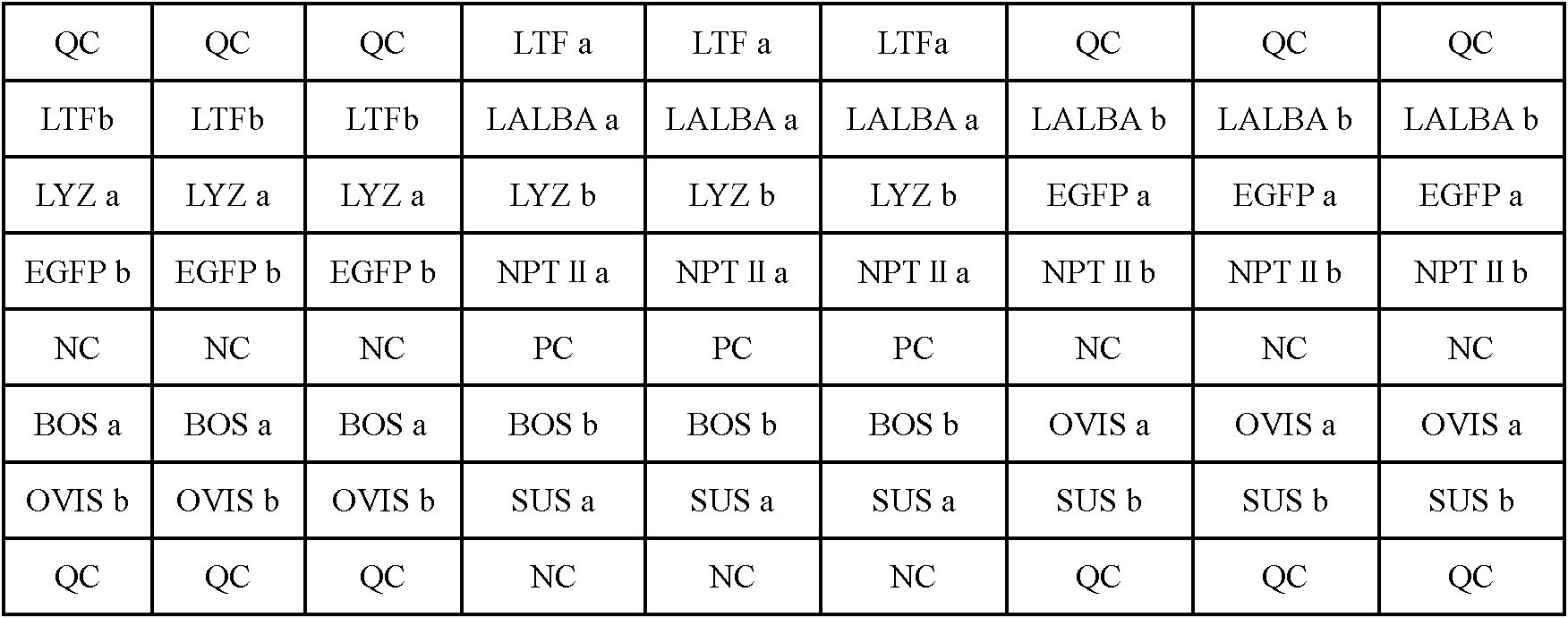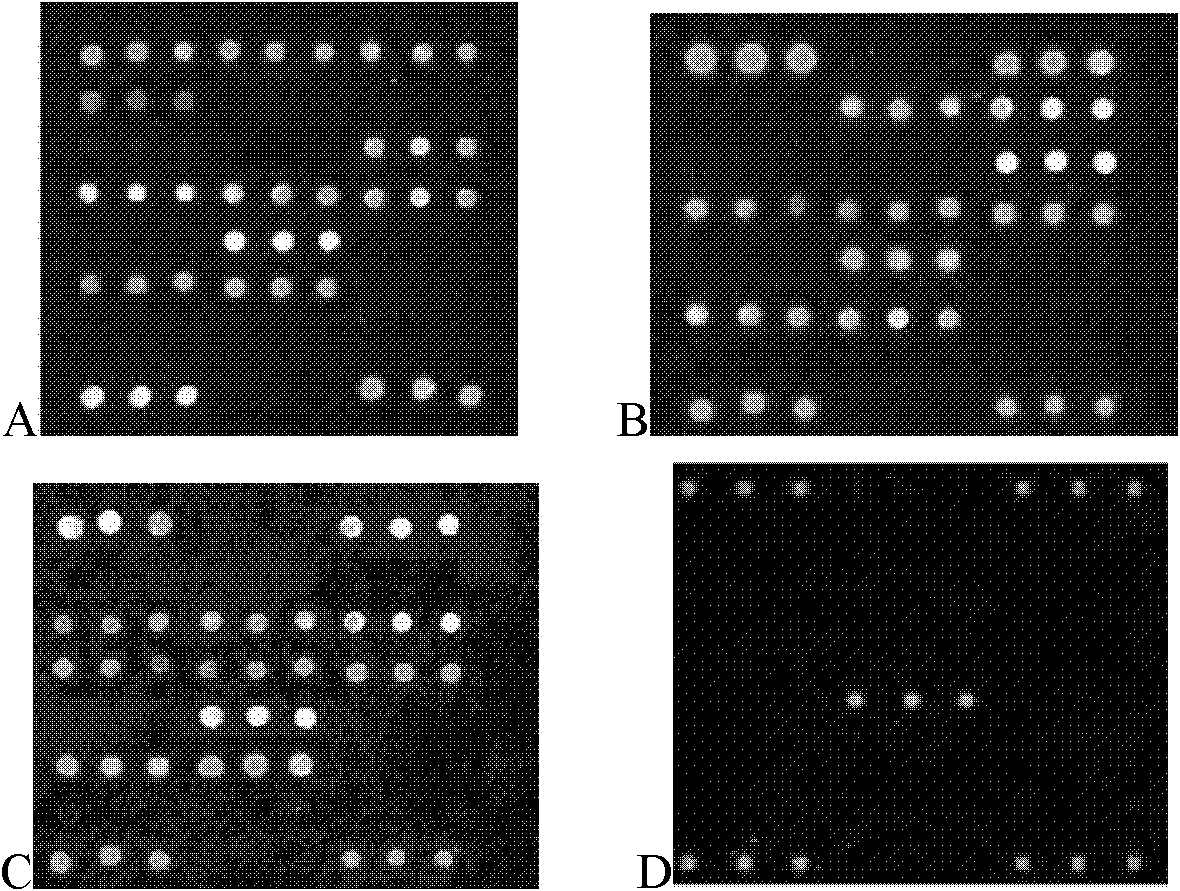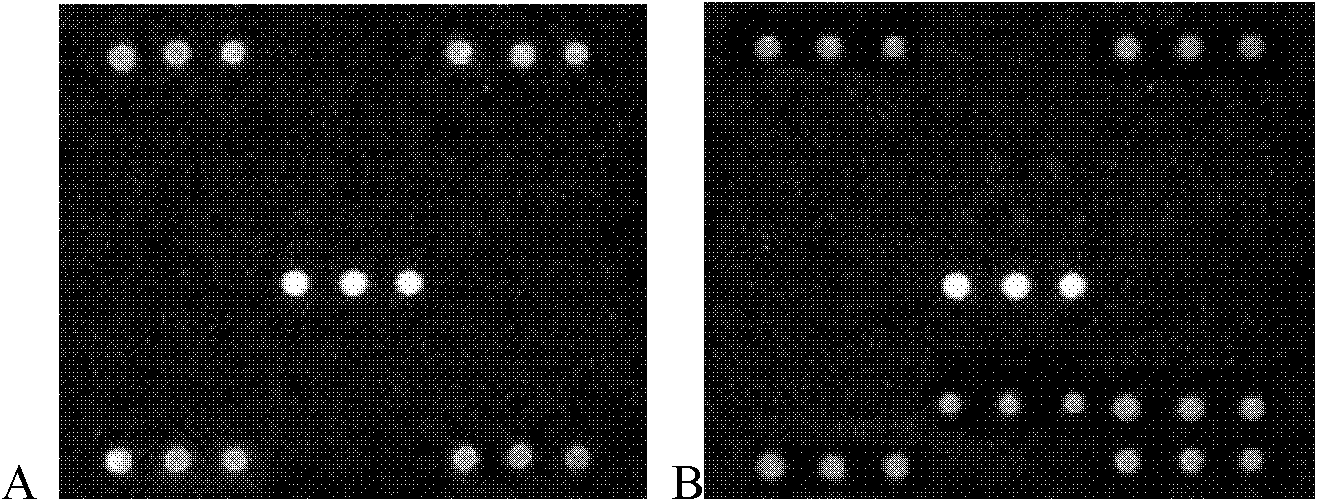Gene chip for detecting transgenic cattle and preparation method and application thereof
A gene chip and transgene technology, which is applied in the field of gene chip detection of transgenic cattle, can solve the problems of lack of detection and monitoring means for transgenic animals and products, weak foundation of safety evaluation and detection of genetically modified animals and products, etc.
- Summary
- Abstract
- Description
- Claims
- Application Information
AI Technical Summary
Problems solved by technology
Method used
Image
Examples
Embodiment 1
[0029]Embodiment 1 transgenic animal
[0030] References for the preparation method of transgenic dairy cows with human lactoferrin "Yang P., Wang J., Gong G., et al. Cattle maternal bioreactor generated by a novel procedure of transgenic cloning for large-scale production of functional human lactoferrin[J] .PLoS One, 2008, 3(10):e3453".
[0031] References for the preparation method of cows with transgenic recombinant human alpha-lactalbumin in the milk of transgenic cloned cows[J].J Dairy Sci, 2008, 91(12): 4466-4476".
[0032] References for the preparation method of transgenic human lysozyme cows "Z Yu, Q Meng, H Yu. Expression and Bioactivity of Recombinant Human Lysozyme in the Milk of Transgenic Mice [J]. Journal of Dairy Science, 2006, 89(18): 2911 ~2918".
[0033] References for preparation method of transgenic pigs with Omega-3 fatty acid desaturase gene "Pan Dengke, Zhang Li, Zhou Yanrong. Somatic cell nuclear transfer to produce sFat-1 cloned pigs with omega-3 f...
Embodiment 2
[0034] Design and synthesis of embodiment 2 primers and probes
[0035] According to the published mitochondrial genes (BOS mtDNA16s rRNA, Ovis mtDNA12s rRNA, Sus NADH5) of cattle, sheep, and pigs in Genbank, the respective codes of the three proteins of human lactoferrin, human lysozyme, and human-α-lactalbumin Genes, as well as marker genes EGFP and NPT II related sequences commonly used in transgenic animals, were screened by DNAstar, primer5.0, DNAman, Mega, etc. and designed 8 pairs of detection primers and 16 specific probes. Synthesized by Shanghai Invitrogen Company. In order to facilitate the reading and judgment of the amplification products by the chip, the downstream primers were modified with TAMRA.
[0036] Table 1: Transgenic Chip Primer Sequences
[0037]
[0038]
[0039] Table 2: Transgenic chip probe sequences
[0040]
[0041]
Embodiment 3
[0042] The preparation of embodiment 3 gene chips
[0043] A 9×8 chip array was designed according to the detection probes (see figure 1 ). The array consists of 4 parts: QC is a spotting positive reference (ctr3) (SEQ ID No.35), which is a fluorescently modified nucleotide; NC is a spotting negative control; PC is a hybridization positive reference (ctr2) (SEQ ID No. .34), that is, TAMRA fluorescent modification is on the single strand of known sequence, which is complementary to the hybridization quality control probe (ctr1) (SEQ ID No.33); other sites are detection probes; each probe has three repeat points .
[0044] After diluting the probes in Table 2 to 12.5 μM, use the BioDotAD1500 chip spotter, according to the chip arrangement diagram ( figure 1 ) arrangement for spotting. After spotting, place the chip under an ultraviolet crosslinker for cross-linking (240mj), then wash with 0.2% SDS for 5-10min, and store in a dry place at room temperature and protected from li...
PUM
 Login to View More
Login to View More Abstract
Description
Claims
Application Information
 Login to View More
Login to View More - R&D
- Intellectual Property
- Life Sciences
- Materials
- Tech Scout
- Unparalleled Data Quality
- Higher Quality Content
- 60% Fewer Hallucinations
Browse by: Latest US Patents, China's latest patents, Technical Efficacy Thesaurus, Application Domain, Technology Topic, Popular Technical Reports.
© 2025 PatSnap. All rights reserved.Legal|Privacy policy|Modern Slavery Act Transparency Statement|Sitemap|About US| Contact US: help@patsnap.com



